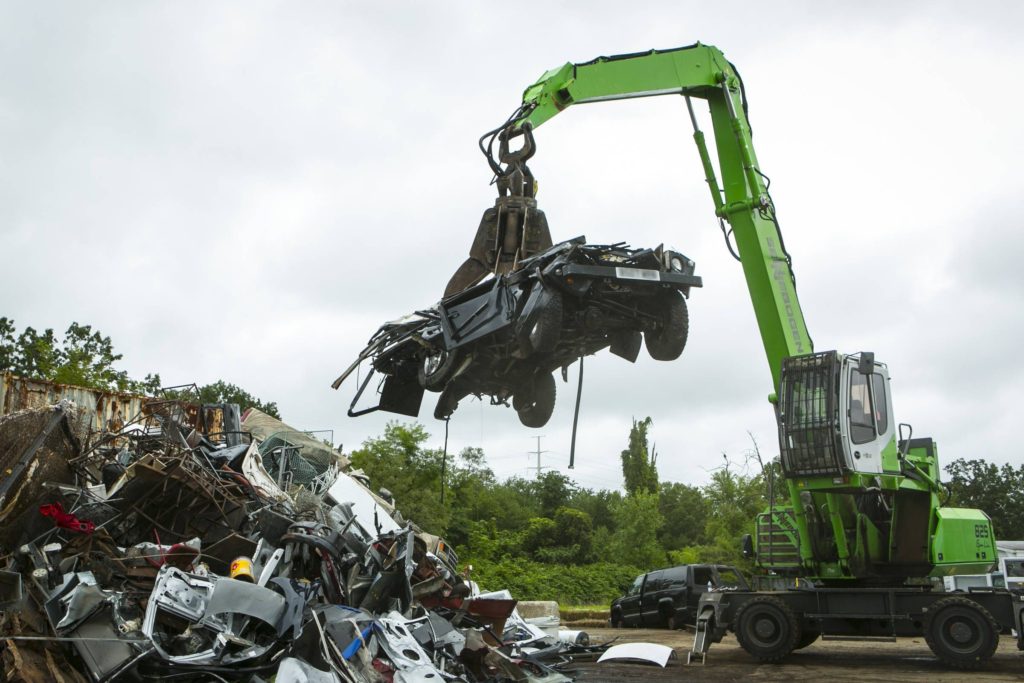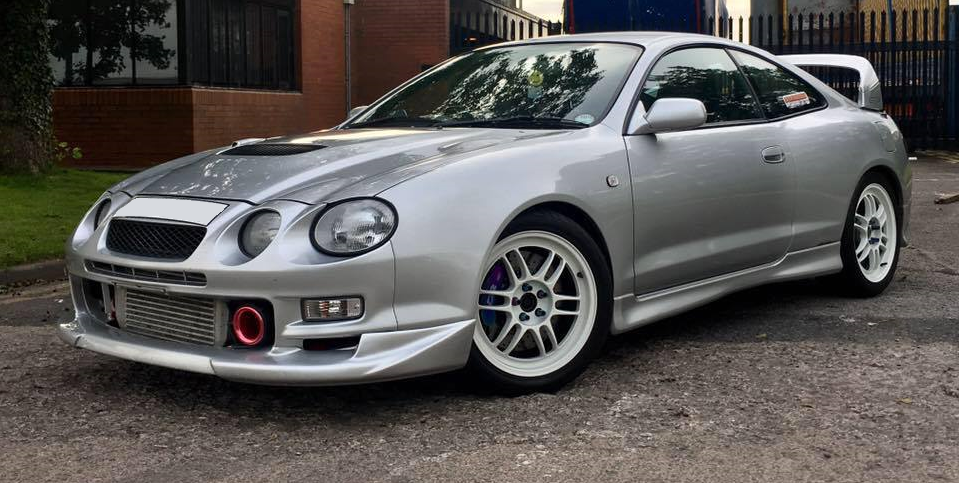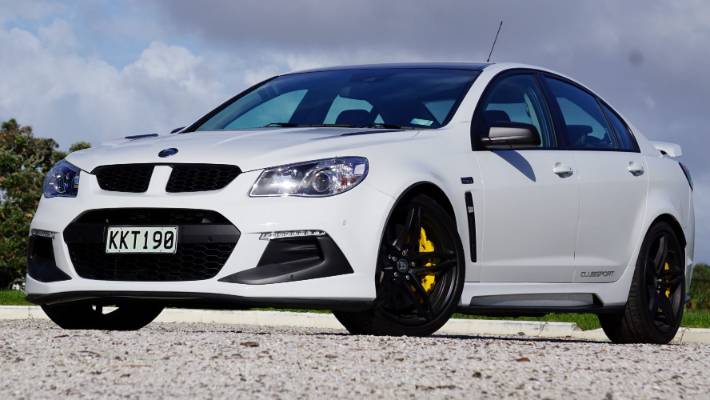If you want to take a car to the USA – whether you’re moving there yourself and taking your car with you, or whether you’re a US resident who’s had to look to Europe to find the car of your dreams – then absolutely the most important thing you need to understand is what’s known as “the 25-year rule”.
This is the piece of legislation that determines whether or not the car in question can legally be imported to the USA at all. Fall foul of this law, and you could find your much-loved ride is on its way to the wrecker’s yard!
So, in this article, we’ll take a close look at that law – why it’s in place, what you need to do to ensure you’re complying with the law, what exceptions apply and how you just might be able to turn it to your advantage – and we’ll look at some of the most desirable motors that become street legal in the US this year as a result.
What Does the Law State – and Why?


In a nutshell (because there are exceptions), you can’t take a car into America that wasn’t built with the US market in mind – unless it’s at least 25 years old. This wasn’t always the case, so a little bit of history is required here…
Prior to 1966, there were no federal safety standards for cars and highways in the USA. States passed their own local laws, and in many cases, these were broadly similar from state to state, but there was no overarching national legislation. That changed in 1966 with the passing of the National Traffic and Motor Vehicle Safety Act, which set national standards for everything from the fitting of seatbelts, to the lighting, markings and barriers on roads.
This legislation was introduced as a way to reduce the spiralling number of fatalities on US roads. And it worked: by 1970 road deaths, which had been steadily increasing since the 1920s, were becoming far less frequent – although other legislation, such as outlawing drink-driving, also played a part in this.
However, by this time it had already become common for US citizens to import overseas vehicles. Examples of this can be found dating back to the very earliest days of the motor car, when the likes of Mercedes-Benz and Opel were the only game in town, but it was in the years after World War II that the practice became widespread, as US armed forces personnel started returning home with Italian sports cars, British motorcycles and so on.
The National Traffic and Motor Vehicle Safety Act made that much more difficult – the Mini, for instance, fell foul of the 1966 regulations. During this era, the process of having a non-compliant vehicle approved for import was fairly straightforward: often it was a case of making a few simple body modifications and getting the paperwork rubber-stamped by the Department of Transportation.
As a result, a thriving ‘grey market’ sprang up, not least because many buyers found it was actually cheaper to buy a car overseas and import it than to buy one from the manufacturer’s US operation. There were also instances where the European or Japanese model was simply more powerful – or subjectively more attractive – than its US equivalent. Both of these things hurt US sales, and by the 1980s tens of thousands of foreign-built vehicles were being privately imported each year.
Accordingly, Mercedes-Benz dealers in the US led a campaign for tighter import regulations, which came into law in 1988 as the Imported Vehicle Safety Compliance Act. This established a far more rigorous system for the inspection and registration of foreign-built vehicles, as well as establishing the principle that any necessary modifications must be carried out by a state-certified Registered Importer, not by a private individual.
This had the effect of dramatically reducing the number of ‘grey market’ vehicles entering the country, as was intended: in 1995 just 300 such cars entered the US, compared to 69,000 in 1985. However, it also prevented car collectors and enthusiasts in the US from getting their hands on many coveted classic vehicles – and so in 1998 the law was amended once more, to permit the import of non-compliant vehicles that were over 25 years old.


Responsibility for ensuring all these laws are enforced lies with the US Department of Transportation (DOT), and specifically its subsidiary body the National Highway Traffic Safety Association (NHTSA). But these aren’t the only government agencies whose requirements you’ll need to satisfy: any cars imported to the US need to match up to emissions standards laid down by the Environmental Protection Agency (EPA) as well.
Thankfully, the EPA regulations include a “21-year rule” of their own. So if your car’s old enough for the Department of Transportation, it’s definitely old enough to satisfy the EPA’s requirements – you’ll just have another form to fill out, which we’ll come back to in due course.
Are There Any Ways Around The 25-Year Rule?


There are, in certain circumstances, ways that you can still legally take a car into the USA that would otherwise be ineligible for import. Some newer vehicles can be brought into the country using what’s known as a ‘Registered Importer’, while others may be eligible for import under the ‘Show & Display’ rule. So let’s take a closer look at those…
Registered Importers
The Registered Importer programme was established in 1990, as a result of the 1988 Imported Vehicle Safety Compliance Act. Essentially, a Registered Importer (RI) is a garage that is certified by the state as being competent to carry out the modifications necessary to bring an overseas-built vehicle into line with the safety standards stipulated in the Act.
If you want to take a car that’s less than 25 years old into the USA, this is the primary route you should look at. A complete list of all current Registered Importers can be found on the National Highway Traffic Safety Association’s website. However, it should be noted that not all RI’s will accept vehicles imported from all countries, and not all RI’s are certified to work on all models of car, so you may need to look around to find the right importer for you.
It’s also important to note that while an RI is state-certified as competent to carry out such work, this is not a blanket import licence. Each individual car will still have to be submitted to the Department of Transportation for inspection, and should a particular vehicle fall foul of said inspection, you will still be liable for the cost of the work carried out – as well as the cost of re-exporting the vehicle from the country!
What’s more, there are many cars that are simply never eligible for import, even using the services of a Registered Importer. The rules here are very specific: in some cases, for instance, you may be able to import the sedan version of a car but not the convertible, or the 3.5L model but not the 5L version. A full list of vehicles that are completely banned from US roads – until they’re 25 years old, that is – can be found, again, at the NHTSA website.
Show & Display
As discussed above, 1998 amendments to the 1988 Act opened up the US market to foreign cars that were over 25 years old. But in 1999 a further amendment to the law was made, allowing the import of cars that are of “historical or technological significance”. This is what’s known as the ‘Show & Display rule’.
For cars to qualify under this exemption, there must be no more than 500 of them in existence. What’s more, if the car is to be registered for use on public highways, the owner must be able to prove (by way of annual and/or spot-check mileage inspections) that the car has driven no more than 2,500 miles in any given year.
What this law means in practice is that, at last count, there are around 65 specific vehicles – mostly very high-end sports cars and luxury tourers – that can be imported to be shown off at car shows, or to sit in the garage of private collectors, but not to be used as daily runabouts. We can’t list all 65 of them here, but if you have deep pockets and have your heart set on a 1995-model 993 Porsche Carrera RS GT2, a 2002 Nissan R34 Skyline GT-R M-Spec Nür or a 2003 Aston Martin DB7 Zagato Coupe, this is the way to go!
Otherwise, you’ll just have to wait until the 25 years are up…
What If I Just Go Ahead and Ship the Car Anyway?
“Rules are made to be broken,” as the saying goes – and yes, there are various ways you can smuggle a car into the US. We just wouldn’t recommend any of them!


Some people try it, of course – usually either by swapping a car’s VIN plate, so that it appears to be older than it actually is, or by importing the car to Canada, driving it over the US border and hoping no one will notice. The problem is that the authorities often do notice, and many a proud new owner of a late-model Land Rover or Mini Cooper who’ve tried this have very quickly become the proud new owner of a cube of compressed metal.
In recent years, the Department of Transportation and the Customs authorities have even taken to posting videos of such car-crushings on YouTube, to deter wannabe smugglers, and these have been widely circulated on motoring websites.
So again: we do not recommend trying any such subterfuges, and if the car you’ve got your heart set on isn’t eligible for import under the exemptions outlined above, you’ll just need to have a little patience…
How Do I Prove My Car’s Old Enough to Be Imported?
Simply knowing that the car you want to ship is 25 years old isn’t enough – you’ll need to be able to prove that fact to the relevant authorities – which means the Department of Transportation (DOT), the Customs & Border Patrol (CBP) and the Environmental Protection Agency (EPA).
Anyone importing a car will need to complete an HS-7 declaration form from the DOT: such forms should be available at your car’s port of entry, but you can also download one from the NHTSA website in advance.
In this instance, it’s Box 1 that you’ll need to fill out, clearly stating the age of the vehicle and ticking the box that says it’s therefore exempt from DOT safety regulations. Note that unless the car’s date of manufacture is marked on a permanently attached manufacturer’s label (as it often is), you’ll need to provide documentary proof of its age, such as the original purchase invoice and/or registration documents.
The Customs & Border Patrol should also provide you with an EPA form 3520-1 on arrival (or again, you can download one from their website in advance). This comes from the Environmental Protection Agency, and you’ll need to tick the box for category ‘E’ (for exempt) to confirm that the car is over 21 years old. As with the HS-7 form, you’ll need to prove the car’s age, so be prepared!
How Do Us Car Buyers Feel About the 25-Year Rule?
It should be noted that there is quite strong opposition to the 25-year rule among petrolheads in the USA – in fact, at time of writing there’s an active petition on Change.org, demanding its repeal, that’s attracted nearly 10,000 signatures.
Opponents point out that, while the laws described above were ostensibly introduced to prevent spiralling deaths on US roads, there were other ways this could have been achieved that would have been more favourable to automobile buyers.
Notably, this whole situation has only arisen in the first place because the United States chose to implement its own unique set of safety regulations, rather than adopt those set by the United Nations’ World Forum for Harmonization of Vehicle Regulations. Most other countries’ safety regulations (including those of all EU nations) comply with UN standards, making the process of buying and importing/exporting cars between those other countries far more straightforward.
It has also been shown, by means of destructive testing, that in many cases cars built to overseas standards are actually safer than those built for the US market. Critics of the 25-year rule would therefore like to see US standards brought into line with those found internationally. This, they argue, would make cars cheaper and safer for the buyer, whereas the current “protectionist” legislation favours only car dealers.
Accordingly, the situation as outlined above may not be the case forever. But for now, it is, and the pressure groups campaigning for a change in the law are just that – pressure groups. The lobbying power of the US motor industry is at least as impressive, so don’t expect the landscape to shift too dramatically any time soon!
So How Can This Be Good Thing for Me?
As described above, the rules around importing a car to the US are labyrinthine, and it can be a costly process. But once a car becomes eligible for import, the 25-year rule does have its advantages!
The obvious case in point would be classic car dealers, who stand to make a killing when a particular model becomes eligible for import. 2019, for instance, saw huge numbers of 1994 Audi RS2 Avants and Renault Clio Williams 2’s imported into the US and sold on at a profit. In this regard, the 25-year rule hasn’t so much stopped private importers from making a killing at the expense of US dealers (as was the case in the years 1966-1988), as kicked the problem a quarter of a century down the road!
But even for the man in the street, what the 25-year rule does offer is the chance to “be the first kid on your block” with the year’s hottest import, giving you serious bragging rights among your petrolhead buddies!
Cars That Become Us-Legal in 2020
To conclude, let’s look at 10 of the hottest 1995 cars that have recently become eligible for US import as of 2020.
Nissan Skyline GT-R R33


Nissan first made Skyline GT-R’s in the late 60s and early 70s, but it’s the post-’89 models that are hot property among US petrolheads: we’ve shipped hundreds of the 1989-1994 R32 cars to the United States in recent years. Now, in 2020, the first R33 models become eligible for import – and with 17,000 built in the years 1995-1998, it’s likely to be a popular import for a few years to come.
Toyota Celica GT-4 (ST505)


The first-gen Celica GT-4 (the 1986-89 ST165) was actually sold in the US for a while, and ST185 models (1989-1993) have been eligible for import for a few years now. But the first ST505’s (1994-99), the most powerful of the car’s three generations with a 250HP engine and improved suspension, only became US-legal last year.
With the 1995 model now also eligible for import, we expect to see quite a few of these making their way across the Atlantic this year.
Mitsubishi Lancer Evolution III


As with the Toyota above, earlier models (the Evo I and II) have been street legal Stateside for a while. But 2020 is the first year in which US buyers will be able to get their hands on the Evo III, which had a racier, more aggressive body shape to match its improved turbocharger compressor and greater horsepower (272, up from 250 on the Evo II).
If you want an Evo IV, though, you’ll have to wait until 2021…
Audi RS2 Avant


The RS2 might not look like much – it’s an Audi station wagon, after all! But under the hood is a Porsche engine that can go from 0-60 in five seconds, and that boasts a top speed of 160mph. With only 3,000 RS2’s ever built, all in 1994-95, they acquired “hot import” status in 2019, and 2020 is likely to see a second wave of imports.
Fiat Barchetta


With sporty good looks and a 1.8L engine capable of taking it from 0-60 in 8.6 seconds, the Barchetta was Fiat’s answer to the Mazda MX-5. Fans of the car would say it’s like driving a Porsche, for the price of a Fiat; critics would point out the car’s highly prone to rust.
Either way, it proved highly popular in Europe and Japan, and with the first models (the car was in production from 1995 until 2005) becoming US-legal under the 25-year rule in 2020, it’s likely to replicate that success among American collectors over the coming decade.
Holden HSV Clubsport


Australia’s Holden has struggled in recent years, and owner General Motors is set to retire the marque completely in 2021. But the ‘special vehicle’ cars built by the company’s performance division remain popular with car enthusiasts and collectors, and none more so than the Clubsport, a ‘sports sedan’ that was the racier version of the top-selling Commodore.
Ten generations of the car were built in the years 1990-2017, and in 2020 US buyers will be able to get hold of the first VS (1995-97) models.
Honda Integra Type R


While the 195bhp Honda Integra (1993-2001) was sold in the US as the Acura Integra, it didn’t shift in huge numbers. So with the car growing in popularity among petrolheads and car collectors in recent years, would-be US Integra owners generally have to look to Japan and Europe – and as of 2020, they’ll be able to legally import cars produced in 1995.
MG F


When it first rolled off the production line in 1995, the MG F was the first ‘true’ MG sports car built since 1980 (as well as being only the third car produced by the Rover Group after its acquisition by BMW). The nippy little roadster had a seven-year production run, but it’s only in 2020 that the first models become legally available to US buyers.
Subaru Impreza WRX Prodrive


The Impreza launched in 1992 and is still in production today. First-gen (1992-2001) models came in four- or five-door variants with either front-wheel or all-wheel drive.
The car’s most notable, however, for its rally success in the 90s, with a certain Colin McCrae at the wheel. And Subaru celebrated McCrae’s achievements in 1995 with the launch of the WRX Prodrive model, which had 16-inch gold alloy rims, McCrae decals and, most importantly, a very limited production run of just 200, individually numbered vehicles. Which can now, of course, be taken to the USA…
Alfa Romeo GTV/Spider 916


Various Alfa Romeos have worn the Spider badge over the past five decades, but it’s specifically 916-series models from the 1995 model year that become eligible for US import in 2020. Available as a 2+2 coupé (the GTV) or a two-seater roadster (the Spider 916), the car’s not particularly rare – over 80,000 of them were built between 1993 and 2004.
But the car’s raison d’etre was to re-establish Alfa Romeo’s reputation as a builder of sports cars, and it worked – Jeremy Clarkson once described the Spider 916 as the greatest sports car of all time, in fact! So US buyers have been snapping them up since 2018, and there’s no reason that should change this year.











